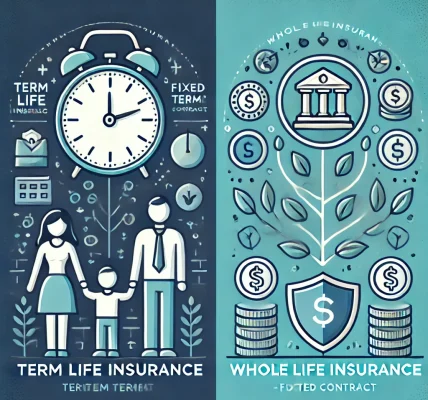When it comes to auto insurance, many factors influence the rates you pay, and one of the most significant among them is your driving history. Your past driving behavior, including any accidents, traffic violations, or claims, plays a crucial role in determining your premium. In this blog post, we’ll explore how your driving history affects your auto insurance rates, what factors insurers consider, and how you can lower your premiums by improving your driving habits.
How Does Your Driving History Affect Insurance Rates?
Insurance companies assess risk when determining premiums, and your driving history is a key indicator of that risk. Insurers believe that drivers who have a history of accidents, violations, or claims are more likely to file future claims, which means higher costs for the insurer. To compensate for this increased risk, they charge higher premiums.
On the other hand, drivers with a clean record are considered less risky and, therefore, may qualify for lower rates. Let’s break down the factors that insurance companies consider when evaluating your driving history.
Factors that Impact Auto Insurance Rates:
1. Accidents and Claims
One of the most significant aspects of your driving history is whether you’ve been involved in accidents, particularly those where you were at fault. If you’ve caused damage to another vehicle, property, or injured someone, it can cause a significant increase in your premium. Each accident on your record raises concerns for insurers about the likelihood of future claims.
Insurance companies typically look at your history for the past three to five years when assessing the impact of past accidents. While a minor fender bender might not have as large of an effect as a major collision, it’s still a factor they’ll take into account. Additionally, if you’ve made claims for damages (even for repairs to your own car), this will likely affect your rates.
2. Traffic Violations
Traffic violations such as speeding tickets, running red lights, and reckless driving can have a substantial impact on your insurance premium. These infractions indicate that you may be a more dangerous driver, and insurers view them as a higher risk. A history of frequent violations can increase your premiums over time, especially if you’re repeatedly cited for serious offenses like DUI or reckless driving.
Certain violations like speeding tickets may lead to a temporary increase in rates, but more severe violations, such as DUI or driving under the influence, can cause long-term premium hikes. Depending on the severity, a single serious violation may cause your rates to spike for several years.
3. License Points
In many states, traffic violations result in points being added to your driving record. Accumulating too many points can trigger penalties, including increased insurance premiums. Depending on your state’s laws, if you accumulate a certain number of points, you may face a surcharge or be required to pay higher premiums.
It’s important to note that some states also offer programs that allow you to reduce or remove points from your record through defensive driving courses. If you’re in a state that provides this option, taking the course might help reduce your premium over time.
4. Insurance Claims History
Apart from accidents, insurance claims for things like theft, vandalism, or natural disasters can also affect your rates. If you’ve made claims for non-accident-related damages (e.g., your car was stolen or vandalized), insurers may consider you a higher risk and raise your rates. However, if you have a history of frequent claims, this can be even more costly. Insurance companies may view repeat claimants as having a greater likelihood of filing future claims.
5. Your Insurance Coverage
If you’ve had lapses in your auto insurance coverage in the past, it can also negatively impact your rates. Insurance companies may see gaps in coverage as a sign of irresponsibility, which could lead to higher premiums. Continuously maintaining active coverage without breaks will help you avoid this issue.
How to Lower Your Auto Insurance Premiums Despite a Bad Driving History
If you have a less-than-ideal driving history but want to lower your auto insurance rates, don’t worry. There are still several strategies you can use to bring your rates down. Here are some tips:
1. Take a Defensive Driving Course
If you’ve accumulated points or traffic violations, many insurance companies offer discounts if you complete a defensive driving course. These courses not only help improve your driving skills but can also show insurers that you’re taking steps to become a safer driver. In many cases, completing such a course can help reduce your premium by up to 10%.
2. Maintain a Clean Record Going Forward
The best way to improve your insurance rates in the long run is to avoid accidents and violations moving forward. While a single speeding ticket may not have a huge impact, a pattern of poor driving can lead to consistent premium increases. By being more cautious on the road and following traffic laws, you can demonstrate to insurers that you’re a low-risk driver over time.
3. Consider Usage-Based Insurance
Some insurers offer usage-based insurance policies, where your premiums are based on how safely and how much you drive. With this type of insurance, you install a device in your car that monitors your driving habits, such as speed, braking, and distance. If you’re a safe driver, you may receive discounts based on your driving behavior. This can be a great option for those with a history of violations who want to prove their reliability over time.
4. Shop Around for the Best Rate
Not all insurance companies weigh driving history the same way. While one insurer might penalize you heavily for past accidents, another might offer more lenient rates. By shopping around and comparing quotes from multiple insurers, you can find the best deal for your driving history. It’s important to remember that just because one insurer raises your rates doesn’t mean you’re stuck with that company.
5. Increase Your Deductible
Another way to lower your auto insurance premium is by increasing your deductible. While this means you’ll pay more out of pocket in the event of an accident, it can reduce your monthly premiums significantly. However, make sure you’re comfortable with the higher deductible and can afford it if needed.
6. Consider the Type of Car You Drive
The type of car you drive also affects your auto insurance rates. High-performance vehicles and luxury cars tend to have higher premiums because they cost more to repair or replace. If you’re looking for a way to lower your premiums, consider driving a car that is less expensive to insure, particularly if you’ve had past accidents or violations.
Conclusion
Your driving history has a direct impact on your auto insurance rates. A record of accidents, violations, or claims can lead to higher premiums, while a clean driving history helps keep your rates low. However, there are several strategies you can implement to lower your premiums, even if you have a less-than-perfect driving history. By taking a defensive driving course, maintaining a clean record, shopping around for quotes, and exploring other options like usage-based insurance, you can find ways to reduce your costs and ensure you’re not paying more than you need to for coverage.



